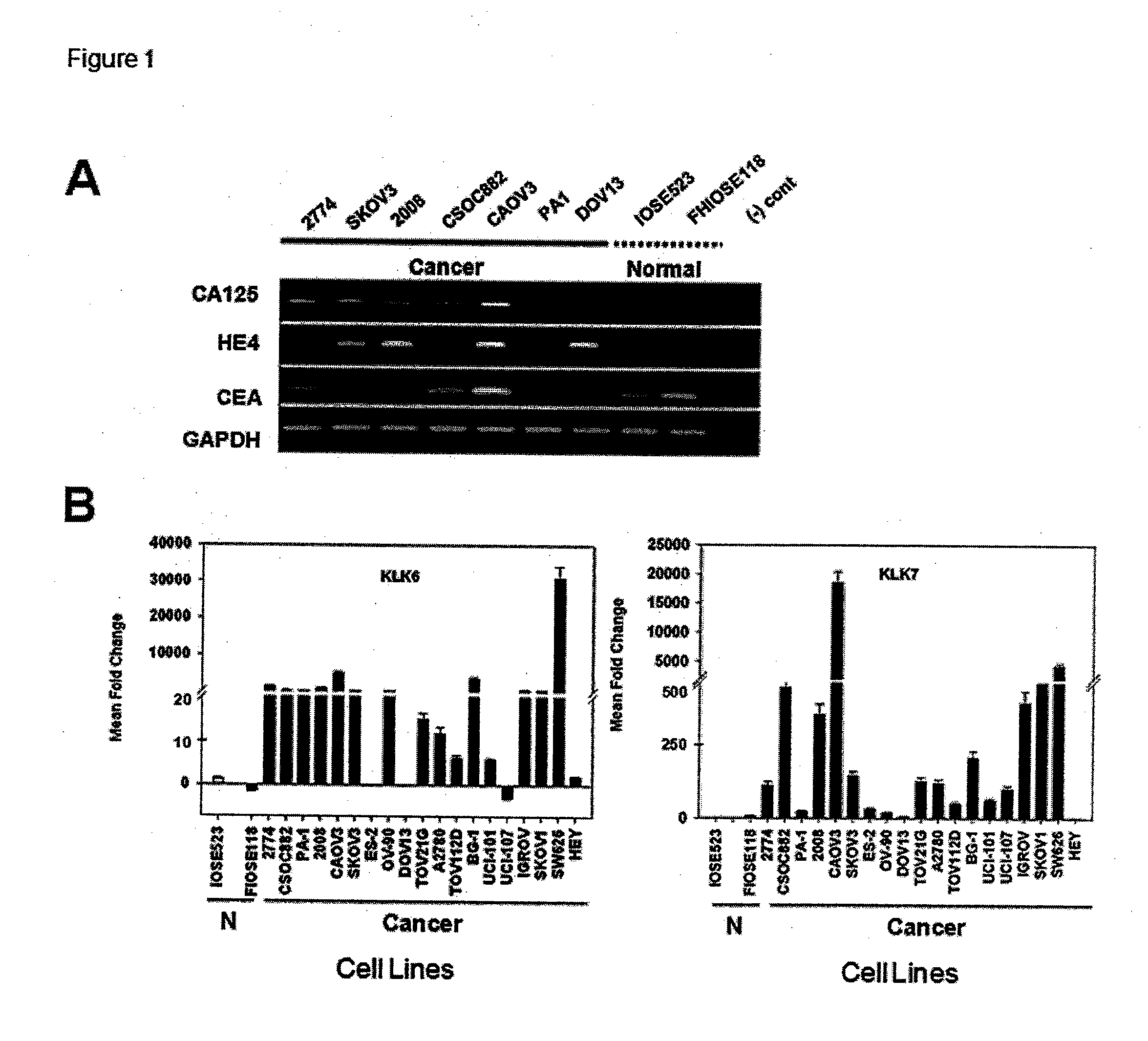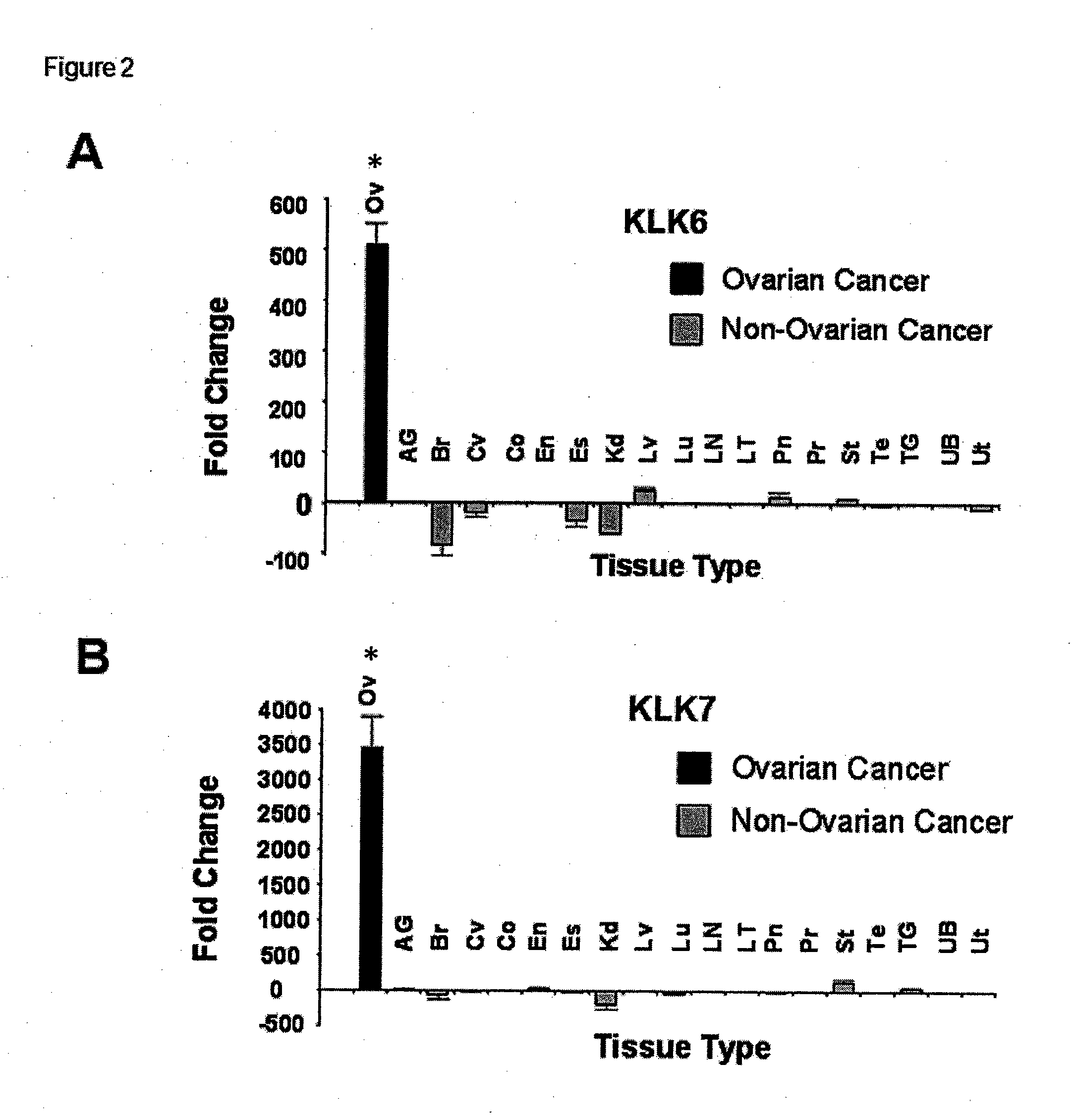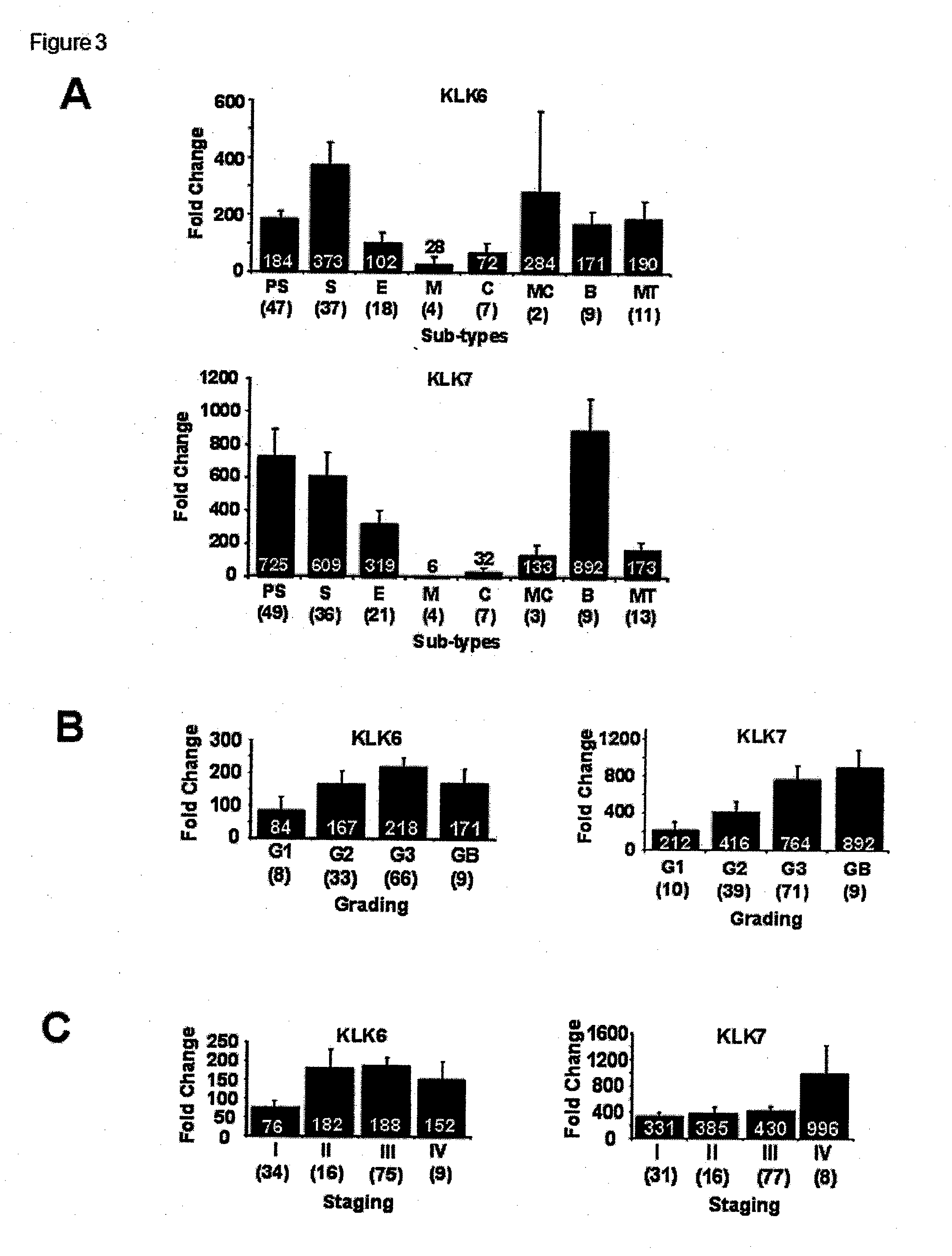Serine proteases as biomarkers for ovarian cancer
a protease and ovarian cancer technology, applied in the field of ovarian cancer, can solve the problems of low survival rate of advanced ovarian cancer, low cure rate, surgical options, etc., and achieve the effect of increasing the level of serine protease protein and increasing the expression of serine protease mrna
- Summary
- Abstract
- Description
- Claims
- Application Information
AI Technical Summary
Benefits of technology
Problems solved by technology
Method used
Image
Examples
example 1
Pre-Screening of Potential Ovarian Cancer Biomarkers Using Bioinformatics
[0176]To pre-screen human genes with high potential for use as early detection biomarkers, the BioXM bioinformatics platform was used with query strings including ovarian, biomarker, upregulation, downregulation, and overexpression, to mine and generate a rank list of candidate ovarian cancer genes from the 6,955 manually curated cancer genes of the National Cancer Institute (NCI) Cancer Gene Index (CGI). This cancer gene database was originally derived from clinicopathology-based projects (e.g., tumor staging) and is generally accepted to be a source of clinically relevant biomarkers for diagnostic use, especially for early cancer detection. The output data set contained a qualified list of 125 genes that represent diverse processes, including apoptosis, proliferation, invasion, metabolism, and angiogenesis. Genes were characterized based on signaling pathways. From the 125 genes, 33 genes were either over- or...
example 2
Pre-screening of Potential Ovarian Cancer Biomarkers using a Library of Ovarian Cancer Cell Lines
[0177]Expression pre-screening in ovarian cancer cell lines is a practical solution for obtaining broad expression profiles while sparing invaluable patient samples. In this study, a library of 19 ovarian cancer and two normal ovarian cell lines was used for mRNA expression screening. The phenotype of normal ovarian cell lines was a mixture of epithelial and fibroblastic (data not shown). Initially, all 117 genes were tested against seven ovarian cancer cell lines representing different grades and subtypes and against two normal ovarian cell lines by qRT-PCR.
[0178]As seen in FIG. 1A, mRNAs of the clinically established ovarian cancer biomarkers CA125 (cancer antigen 125), HE4 (human epididymis protein 4), and CEA (carcinoembryonic antigen) were overexpressed in all these lines. From the first stage of screening, 30 candidate genes were selected that were differentially expressed in cance...
example 3
Elevated Expression of KLK6 and KLK7 mRNA in Ovarian Cancer Specimens
[0179]In this study, expression of the selected 12 genes was analyzed by qRT-PCR as a final screening step, measured in normal and cancer samples from 394 individuals and representing 18 different tumor types, apart from ovarian cancer.
[0180]The analysis indicated that the mean differential mRNA expression between ovarian tumor versus normal ovarian tissues was over 500-fold for KLK6 (p<0.001) and over 3000-fold for KLK7 (p<0.001). The normal control was a mixture of epithelial and stromal components, representing the true normal ovary. In addition, the differential overexpression of both mRNAs was highly specific to ovarian cancer relative to “cancer versus corresponding normal tissues” of other cancer types (p<0.001 at 95% confidence level, CI=20 with 30% of total population) (FIG. 2). The difference between cancer versus corresponding normal tissue was greatest in ovarian cancer compared with other major cancer ...
PUM
 Login to View More
Login to View More Abstract
Description
Claims
Application Information
 Login to View More
Login to View More - R&D
- Intellectual Property
- Life Sciences
- Materials
- Tech Scout
- Unparalleled Data Quality
- Higher Quality Content
- 60% Fewer Hallucinations
Browse by: Latest US Patents, China's latest patents, Technical Efficacy Thesaurus, Application Domain, Technology Topic, Popular Technical Reports.
© 2025 PatSnap. All rights reserved.Legal|Privacy policy|Modern Slavery Act Transparency Statement|Sitemap|About US| Contact US: help@patsnap.com



